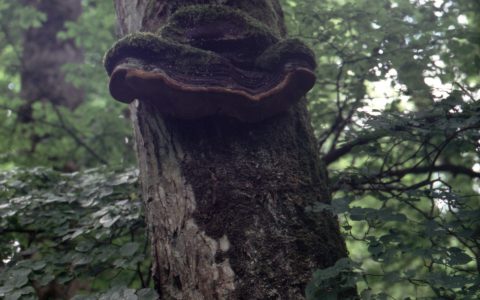Crypto – A biodiversity study
- Project duration:
- 1987-1997
- Project coordinator:
- Prof. dr hab. Janusz Bogdan Faliński
Common floristic and phytosociological studies provide only a small part of the information about the biological diversity of the well preserved forest communities of primeval character. Knowledge of the full biodiversity requires more detailed research at different seasons of the year, carried out by appropriate specialists, in the most representative sites, in the same reference system and using a similar methodology. The study included: bryophytes, vascular plants, lichens and fungi.
The forests in the forest division no. 256 (144 ha) of the Białowieża National Park, which has been under strict protection since 1921, were used for research. They represent six most important types of forest communities in the whole scale of their variability and characteristic toposequence. The study site is divided into 144 plots (each about 1 ha) with permanently marked corners. The object has good cartographic documentation of vegetation, habitats, stands, soils and selected ecological processes.
On each plot, the specialist of the respective organism group performed a detailed survey, material collection and analysis. In all years of the study, all information on biodiversity was related to 6 types of forest communities, 10 tree species, 26 soil types, 12 types of terrain microforms, using a three-step scale of species abundance (1-3).
During the project duration, 1992 species were recorded, including Spermatophyta (286 species), Pteridophyta (17 species), Bryopsida (104 species), Hepaticopsida (41 species), Lichenes (166 species) and Fungi (1380 species). The greatest richness and diversity of species was found on wood in different phases of decomposition and on the bark of trees. The analysis of the entire data base (about 36 thousand records) was carried out in terms of taxonomy and functional ecology. Among the species recorded during the study, there were species new to science, new to the biota of Poland and the Białowieża Forest. Several species were not recorded in Poland anywhere outside the Białowieża Forest; they are relics of the old-growth forests. The synthesis of the project consists of 4 volumes, including the Ecological Atlas, in which colour maps and diagrams contain information on the distribution and conditions of occurrence of all recorded species.
Data from the CRYPTO project were the background for analyses carried out within the KlimaVeg project.
Faliński J.B., Mułenko W., eds. 1997. Cryptogamous plants in the forest communities of Białowieża National Park. Ecological Atlas (Project CRYPTO 4). Phytocoenosis 9 (N.S.) Supplementum Cartographiae Geobotanicae 7: 1-522.
Faliński J.B., Mułenko W., eds. 1996. Cryptogamous plants in the forest communities of Białowieża National Park. Functional group analysis and general synthesis (Project CRYPTO 3). Phytocoenosis 8 (N.S.) Archivum Geobotanicum 6: 1-224.
Faliński J.B., Mułenko W., eds. 1995. Cryptogamous plants in the forest communities of Białowieża National Park. General problems and taxonomic groups analysis (Project CRYPTO [2]). Phytocoenosis 7 (N.S.) Archivum Geobotanicum 4: 1-176.
Faliński J.B., Mułenko W., eds. 1992. Cryptogamous plants in the forest communities of Białowieża National Park (Project Crypto [1]). Phytocoenosis 4 (N.S.) Archivum Ge-obotanicum 3: 1-48.

















